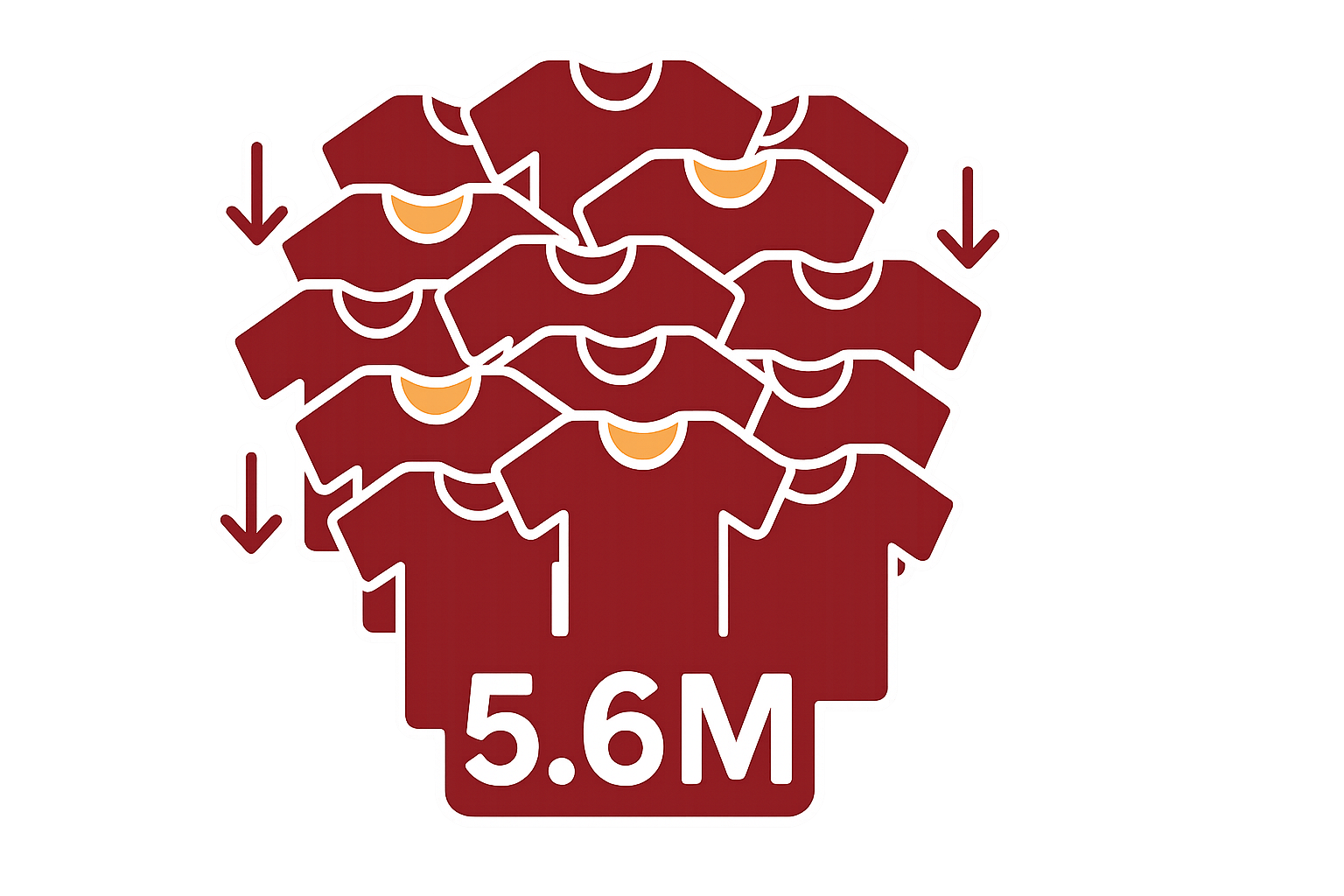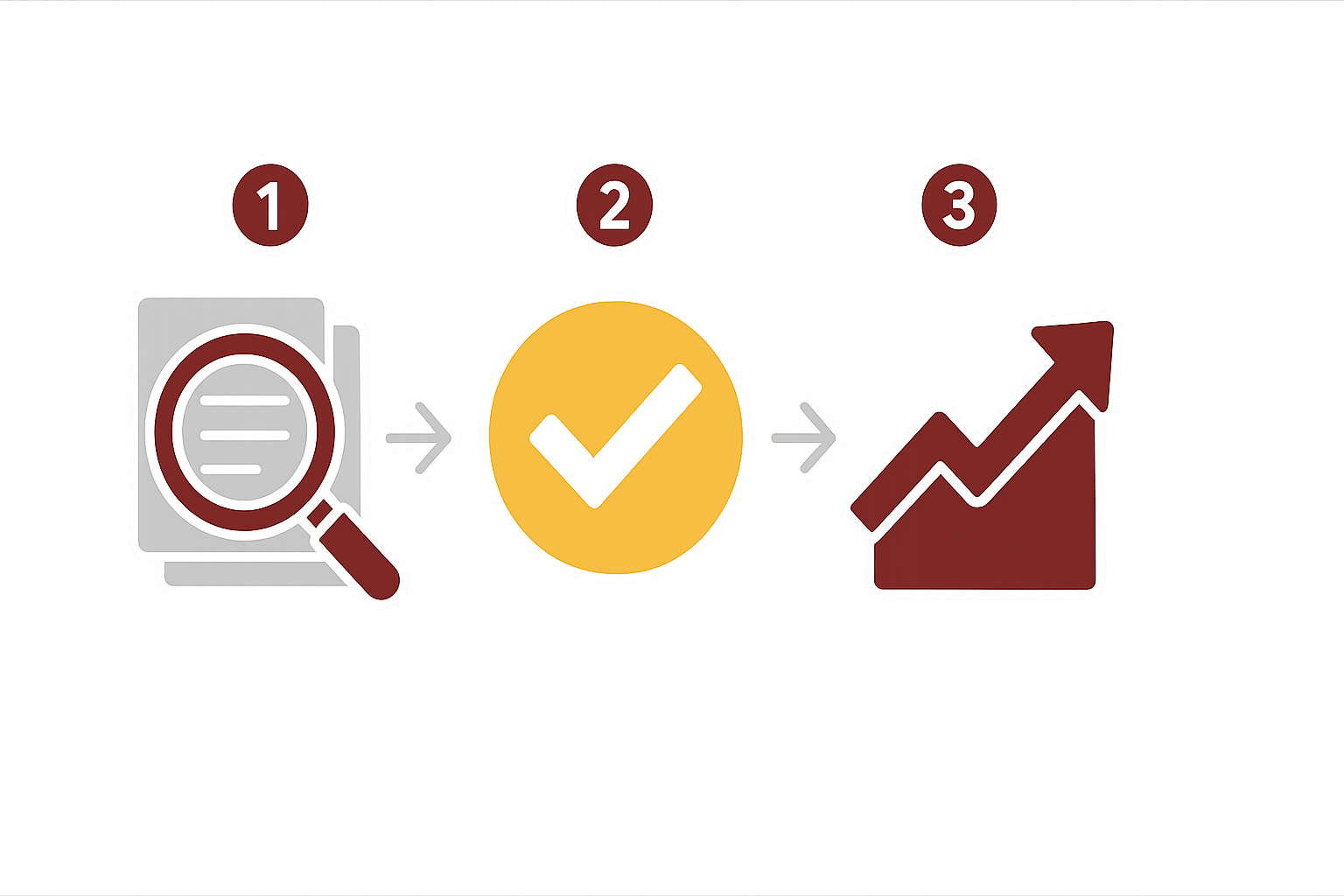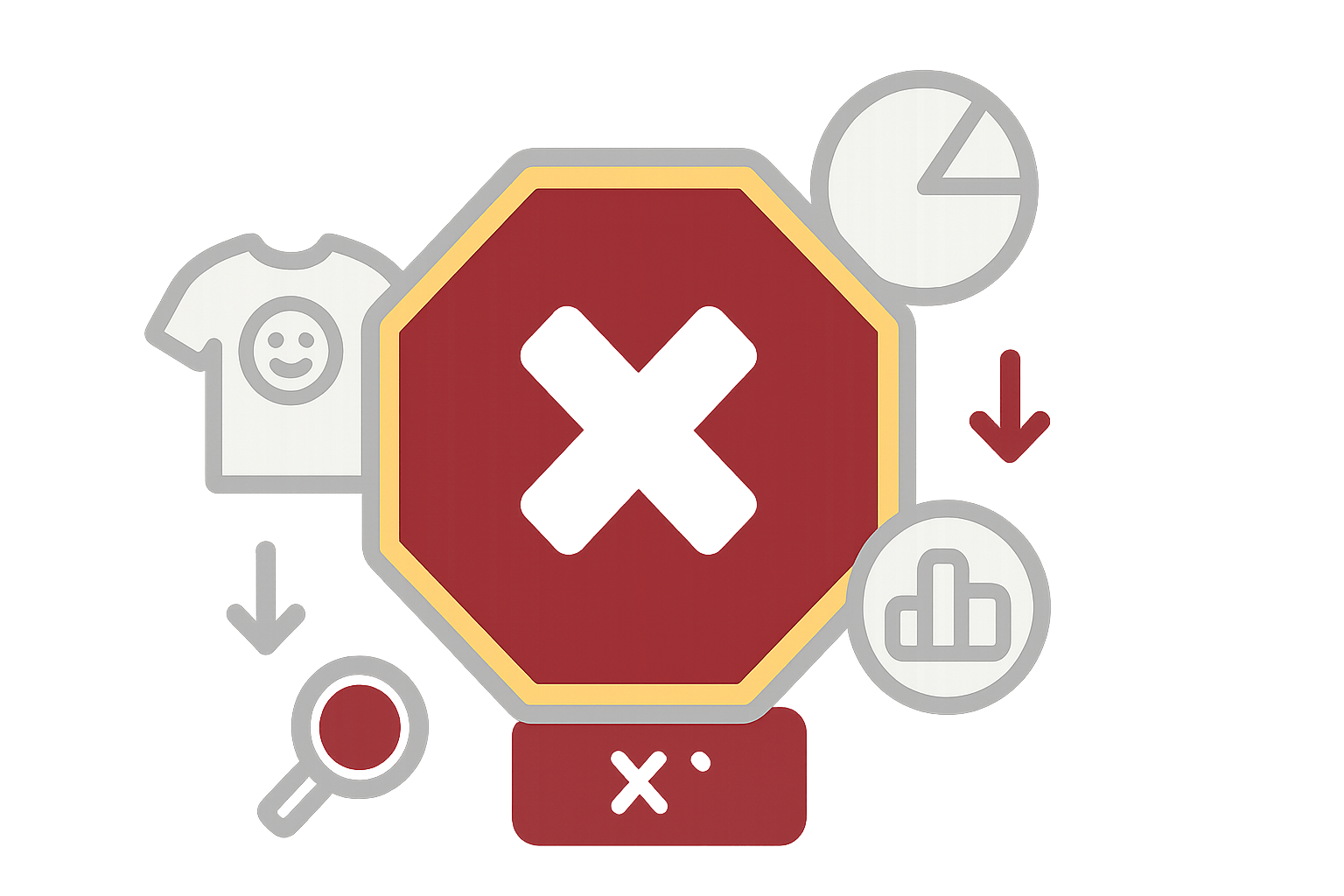
The print on demand market is reaching $75.3 billion by 2033, but most sellers never see meaningful profit. Why? They're targeting the same oversaturated niches as 5.6 million other sellers.
Generic pet products, quote t-shirts, and broad "mom life" designs flood marketplaces. When you search "t-shirts" on Etsy, you compete against 11,764 paid ads. The jewelry category alone has 6.32 million listings. Your designs get buried on page 47, invisible to buyers.
But here's what changed in 2025: Winners stopped chasing broad niches everyone knows about. They found micro-niches with passionate buyers and low competition. The difference? Profit margins of 30-50% instead of scraping by on 15-20%.
This guide shows you exactly how to identify profitable niches with low competition, validate them before you waste time and money, and avoid the mistakes that kill 80% of POD businesses before year two.
Why Most Print on Demand Niches Are Overcrowded
Search "t-shirts" on Etsy and you're competing against 11,764 paid ads. The jewelry category has 6.32 million listings—guaranteed failure.
Saturation has specific thresholds. On Etsy, over 100,000 listings for main keywords signals oversaturation. Top sellers with 500+ reviews mean you're too late. On Amazon, products ranked over 1 million BSR (Best Seller Rank) have minimal sales.
Unsaturated niches show under 5,000 listings, fewer than 10 major competitors, and top sellers with under 100 reviews. The real opportunity is finding specific niche ideas before they peak.
How to Find and Validate Profitable Niches
Finding profitable niches with low competition requires systematic niche research. Here's how to research a niche and validate it works.
The Sweet Spot: Search Volume vs. Competition

Target 1,000-10,000 monthly searches with under 500 active sellers. Use Google Trends to validate consistency over 6-12 months—you want steady growth, not volatile spikes.
For Etsy, you need minimum 22 monthly searches with 70%+ click-through rate. Tools like eRank (free tier available) show green, yellow, or red competition indicators. Green means go. For Amazon, Merch Informer ($9.99-$19.99/month) remains the gold standard niche research tool.
Key metrics to understand:
- BSR (Best Seller Rank): Under 500,000 = steady sales; 10,000-50,000 = ideal entry point
- CPC (Cost Per Click): Above $2 = people are actively buying; $3+ = strong buyer intent
3-Week Validation Process
Week 1: Choose 3 potential niches. Score each 1-10 on demand, competition, profit potential, personal interest, and year-round viability (need 35+ total to proceed). Check Google Trends and search volume.
Week 2: Search your keywords on Etsy or Amazon. Count listings (under 5,000 is viable). Look for quality gaps—top products with 3.5-4.0 stars instead of perfect ratings signal opportunity. Check if 3-5 sellers under one year old appear in top 50 results.
Week 3: Order 1-2 samples ($50-$100). Create 3-5 test designs. Run micro-ads on Facebook or Instagram ($5-$10 daily for 3-4 days, $15-$40 total). Target: break-even or positive ROI = winning niche.
Red flags—stop immediately: Over 1,000 similar products, top 20 all have 1,000+ reviews, keyword difficulty over 75.
Green flags—proceed: Growing Google Trends (20%+), healthy profit margins (25-40%), active communities (Reddit threads, Facebook groups with 50,000+ members).
Best Niches with Low Competition
Here are good niche ideas combining year-round demand with manageable competition.
Pets—But Make It Specific: The $150.67 billion pet market is crowded, but breed-specific targeting works. Instead of "dog owners," target "Bernese Mountain Dog owners who hike" or "Corgi owners in urban apartments." Products: breed-specific apparel, custom portraits, memorial items.
Niche Professions: Generic "nurse" products fail. Specific roles succeed: NICU nurses, occupational therapists, veterinary technicians. 73% of profession merchandise is purchased as gifts. Products: t-shirts with profession-specific acronyms, mugs with equipment illustrations.
Trending: Cozy Gaming & BookTok: Cozy gaming (Stardew Valley, Animal Crossing) exploded 50%+ targeting wholesome games. BookTok drives 20,000 daily book purchases on Etsy. Products: cozy gaming mousepads, dark academia tote bags, literary mugs with clever references (not generic quotes).
Trending: Fake Brands: Examples like "Certified Flop Era" and "Delulu Department" convert like real streetwear at $25-$45. Legal advantage: original designs avoid trademark issues.
The Micro-Niche Formula for Premium Margins

Let's talk money. General POD stores scrape by on 15-20% margins—barely sustainable after ads. Micro-niche specialists capture 30-50%+ through precision targeting.
The formula: Interest + Demographic + Behavior = Micro-Niche
Examples of the progression:
- "Fitness enthusiasts" → "Yoga practitioners" → "Hot yoga practitioners in urban settings who practice daily"
- "Healthcare workers" → "Nurses" → "NICU nurses who work night shifts"
- "Pet owners" → "Dog owners" → "Bernese Mountain Dog owners who hike with their dogs"
Why micro-niches work: Reduced competition eliminates price comparison. Perceived value increases when products feel "made just for me." You become the only option. These are niche products to sell that command loyalty.
80% of consumers willingly pay premium for products in micro-niches. Successful stores price at $50-$100 versus mass market $15-$25. Customers accept the premium because specificity meets their exact needs.
Niches to Avoid (Where Dreams Die)
Generic quote t-shirts: 11,764 Etsy ads, 50,000+ Amazon results. 80% failure rate. Extremely low barrier to entry means anyone copies internet quotes.
Basic pet products: Generic "I love my dog" products are invisible. Only breed-specific targeting works.
Mom life shirts: Keywords like "Mom T-Shirt" are "hugely saturated." Only extreme sub-niching (like "Hockey Mom" or specific parenting situations) succeeds.
Generic funny t-shirts: Short lifespans (weeks), race-to-bottom pricing kills margins.
Common Mistakes That Kill POD Businesses

Going too broad: Start narrow (e.g., "NICU nurses" not "nurses"). You can expand later after dominating a micro-niche.
Chasing profit over passion: 42% of startups fail from no market need. Find the intersection of personal interest and proven demand. You'll need that interest when facing challenges.
Skipping validation: Don't create 100-product collections. Test with 3-5 designs first. Successful POD sellers emphasize "create products and test them" as core strategy.
Ignoring competition: Healthy competition validates the market. Focus on differentiation through micro-niching and quality, not being first.
Your Next Steps to Launch
1. Choose 3 potential niches from the categories above. Apply Interest + Demographic + Behavior formula. Document target audiences and market size (50,000-500,000 optimal).
2. Run the 3-week validation:
- Week 1: Score on 5 factors, check trends
- Week 2: Analyze competition, identify gaps
- Week 3: Order samples, test designs, run $50 in micro-ads
3. Start with 5 designs, not 50. Test, learn, iterate. Top performers reach $1,000 revenue in 3-4 months. Average sellers take 5-6 months.
The print on demand market will hit $75.3 billion by 2033. Your slice depends on choosing the best niches with genuine demand, low competition, and audiences you understand.
Winners validate systematically, embrace micro-targeting, and offer better value than competitors. They stopped wondering and started testing.
Find your micro-niche, validate ruthlessly, and start building today. Not next week. Today.
FAQ
What is the most profitable print on demand niche? Micro-niches targeting passionate communities consistently deliver 30-50% margins: specific dog breeds, niche professions (NICU nurses, occupational therapists), hobby subcultures (cozy gaming, BookTok). The formula is Interest + Demographic + Behavior. Low competition, premium pricing, and buyers who don't shop around create profitability.
How do I know if a niche is too saturated? Run these tests: (1) Over 100,000 Etsy listings for main keywords. (2) Amazon products mostly ranked over 1 million BSR. (3) Top competitors all have 1,000+ reviews. Use eRank—red indicators mean avoid, green with under 5,000 listings indicates opportunity.
Can I succeed in a competitive niche? Yes, with differentiation. Micro-niche down ("NICU nurses" instead of "nurses"), offer superior design quality, and create better value. Generic approaches fail—specificity and quality win. Even in competitive spaces, micro-niches find room.
Level Up With PrintCube!
Simply use PrintCube for print on demand. Get started for free. No credit card or subscription required.
Sign Me Up!
